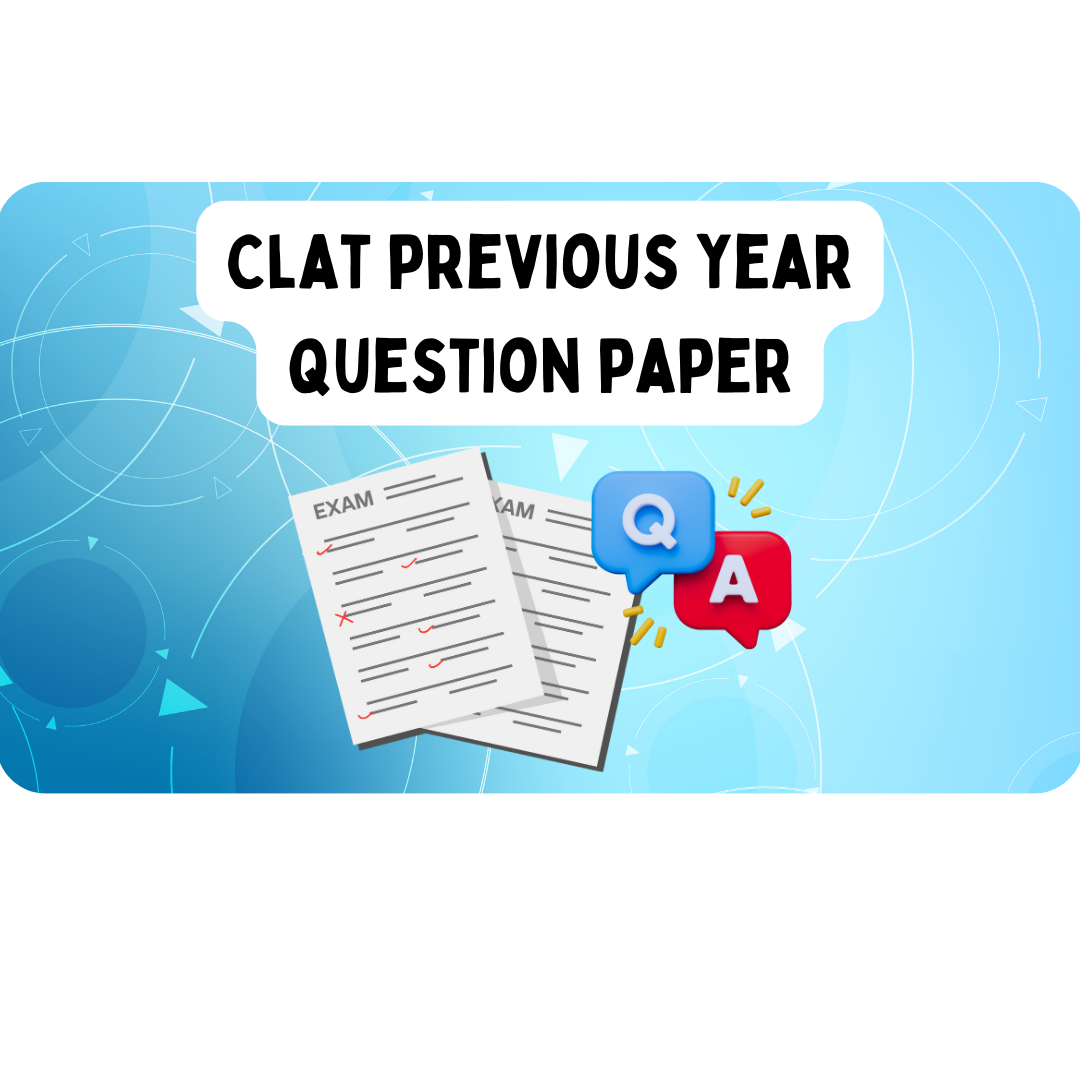Preparing for the Common Law Admission Test (CLAT) is no easy feat. This national-level entrance exam holds the key to securing a coveted spot in one of the 22 National Law Universities (NLUs) across India. As one of the most competitive exams, aspirants must adopt a strategic approach to succeed. One of the most effective ways to prepare for CLAT is by practicing with CLAT Previous Year Question Papers (PYQs).
The CLAT Previous Year Question Paper is an essential tool for every aspirant, providing invaluable insights into the exam’s structure, question patterns, and scoring system. These papers, along with the CLAT Sample Papers available on the official website of the Consortium of NLUs, offer a glimpse into the recurring topics and difficulty levels of the exam, helping candidates tailor their preparation.
By solving CLAT Previous Year Question Paper, candidates can boost their problem-solving speed and gain confidence for the big day. Furthermore, analyzing these papers will help you identify key areas of focus and understand the relative importance of each section.
In this guide, we delve into why CLAT Previous Year Question Papers are indispensable, where to find them, and how to use them effectively for a structured and disciplined preparation strategy. Whether you’re aiming for a top rank or simply aiming to crack the exam, practicing with past CLAT papers is a proven method for success.
How to undertake CLAT (UG) Previous Question Papers (CLAT PYQ)

The CLAT (UG) exam is an offline test consisting of multiple-choice questions (MCQs) that candidates must answer with pen and paper. It comprises 120 questions, each worth 1 mark, for a total score of 120 marks. There is a penalty of negative marking for every incorrect answer, and candidates are allotted 2 hours to complete the test, which translates to about 1 minute per question. To perform well, candidates need to be proficient in interpreting passages, grasping legal concepts, solving logical puzzles, and working through mathematical problems.
The CLAT exam is divided into the following five sections:
- English Language
- Current Affairs
- Legal Reasoning
- Logical Reasoning
- Quantitative Techniques
It’s important to note that unanswered questions do incur negative marking, so it’s always better to leave a question blank rather than guess randomly. Regularly working through these papers also helps identify key areas for improvement, ensuring thorough preparation for the actual exam
Effective Strategies for Using CLAT Previous Year Question Papers
Simply having access to CLAT previous year question papers is not enough – it’s how you utilize them that truly makes a difference in your preparation. Here’s how to make the most of these valuable resources:
- Start Well in Advance: Begin practicing CLAT question papers 6-8 months before the exam to get comfortable with the exam pattern and structure.
- Replicate Real Exam Conditions: Try solving the papers in a distraction-free environment with a timer to mirror the actual test atmosphere and enhance your time management.
- Review and Learn from Mistakes: After completing each paper, analyze your answers carefully. Understand where you went wrong and revisit the topics that need improvement.
- Spot Question Patterns: Pay attention to frequently asked topics and recurring question types. For example, CLAT typically focuses on reading comprehension and updates in legal affairs.
- Incorporate Mock Tests: Alongside solving previous year papers, take regular mock tests to build a well-rounded preparation plan and evaluate your progress.
By following these strategies, you can maximize the benefits of practicing with CLAT previous year question papers and move closer to your goal of acing the exam.
Benefits of Attempting CLAT Previous Year Question Papers
Attempting CLAT Previous Year Question Papers (PYQs) plays a crucial role in preparing for the exam. These papers provide candidates with a realistic feel of the actual test, helping them understand the exam pattern, improve time management, and familiarize themselves with different types of questions. Here are some key benefits of solving CLAT PYQs:
- Enhanced Time Management
Repeated practice with CLAT PYQs helps students develop effective time management strategies. By simulating exam conditions, candidates can learn to allocate the right amount of time to each section, stay calm under pressure, and improve their performance during the actual exam. - Understanding the Exam Pattern
Consistent exposure to the CLAT question papers makes students familiar with the exam format and the types of questions typically asked. This familiarity boosts their confidence, giving them an advantage on exam day as they will know what to expect. - Identifying Key Topics
By solving previous year papers, candidates can identify recurring topics that frequently appear in the exam. This insight allows them to prioritize these areas during their revision, ensuring that they are well-prepared for the most important sections of the test. - Building Confidence through Practice
The more students practice with the CLAT PYQs, the more comfortable and confident they become. Regular practice reduces the anxiety surrounding the exam and enables them to approach it with a clear and focused mindset.
Incorporating these strategies into your preparation plan, by regularly practicing CLAT previous year question papers, can significantly improve your chances of success and give you an edge in acing the exam.
CLAT Previous Year Question Paper PDF
|
Year |
CLAT Question Paper with Answer Key PDF |
|
2025 |
|
|
2024 |
|
|
2023 |
|
|
2022 |
|
|
2021 |
|
|
2020 |
|
|
2019 Set A |
|
|
2019 Set B |
|
|
2019 Set C |
|
|
2019 Set D |
|
|
2018 |
|
|
2017 |
|
|
2016 |
To Download Monthly Current Affairs PDF Click here
Click here to get a free demo
Discover all about CLAT Exam
